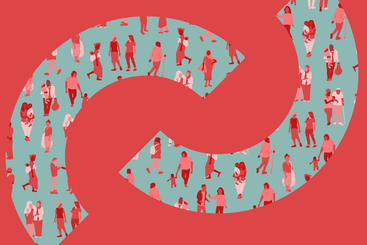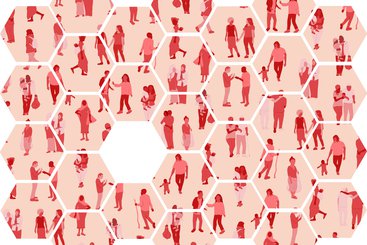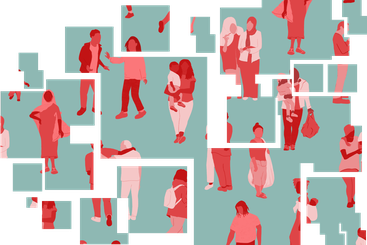Humanitarian agencies have become increasingly concerned with social cohesion since the beginning of the conflict in Syria. Huge population movements have the potential to destabilise already fragile societies – a major concern when Syrians make up around a quarter of the population of Lebanon.
Agencies wishing to help refugees fear that their assistance could make life worse for them, if it exacerbates tensions with the local (‘host’) population. Since then, more and more aid agencies have introduced definitions of social cohesion and many now address it in their programming – or, perhaps more accurately, name-check it in their proposals. In project proposals, ‘building social cohesion’ can mean almost anything, from sharing aid resources between refugees and their hosts (using that cute redefinition of the target group from ‘displaced people’ to ‘displacement-affected populations’) to organising football matches between different population groups. As agencies increasingly make better social cohesion an objective of their work, they have a growing need to be able to measure it – because otherwise, how can they report on impact?
At this point, at HPG we thought it might be a good idea to take a pause for a reality check – what is this thing called social cohesion? Does it really matter to displaced people and why? And is there any reason to believe that sharing aid or organising football matches are a better way to achieve it?
Together with our colleagues from GLOW consultants from Pakistan, we looked at the lives of Afghan refugees in northwest Pakistan – many of whom were born there, with parents or even grandparents who had left Afghanistan at some point over the past 40 years. Instead of trying to get them to fit their life stories into our own frameworks defined by aid jargon, we asked them about their social relations – of all kinds, with all different people, positive and negative and what mattered most to them about them. Their stories were, of course, fascinating, as the lives of other human beings almost always are. They also shed some surprising light on this nebulous term social cohesion.
In short, there is no such thing as social cohesion. Yes, social cohesion is real and important, but it is not one ‘thing’. It has many dimensions, and these can be complementary or competing; they can change in the same or opposite ways over time; and they can be important to very different people for different purposes during their lives. For example, many Afghan men were focused on establishing a close enough relationship with a few Pakistani nationals on whom they could make claims – to register a mobile phone, to intervene if there were any administrative difficulties, etc. Women, on the other hand, had a much more confined social existence, but appreciated the fact that they might suddenly need the help of neighbours – to find a lost child, to help take a sick person to hospital. To complicate this further, this took place in a context where Afghans were themselves divided into Pashtuns, who shared an identity and culture with most of their Pakistani neighbours, and non-Pashtuns (Darizuban or Farsiwan) who didn’t. In some dimensions, the greater the cohesion in a sub-group, such as Afghan Pashtun, the less cohesion there was in society as a whole.
When you have heard people who were given a chance to talk about their rich range of relationships and how they try to protect or advance them, it becomes very apparent how unhelpful it is to shove under one umbrella term the whole complex world of social relations, as if the relations of all different people with members both of their own group and ‘outsiders’ could all be meaningfully described together. Two lessons in particular stand out.
The first is how little of reality is captured by aid programming’s invocation of ‘social cohesion’. The generic simplification of ‘social cohesion’ as a single thing is dangerous. Because it becomes meaningless when treated generically, it means that programmes trying to improve social cohesion are essentially working without any set objectives, and, as a result, no real theory of change. If interventions are not clear about which kinds of relations need to change, for whom and what the trade-offs will be, then it is a matter of luck whether or not they bring any benefits to anyone. Indeed, if there was no attempt to understand exactly which kinds of relationships matter to people and how they are influenced, then attempts to help may even make life worse for people. And we might never know, because if there are no clear objectives, monitoring cannot contribute learning. Instead, with nothing specific to monitor, pressure will increase to come up with a list of boxes to tick and numbers to find and add up to create some phantom social cohesion index – at which point any relevance to real context is irredeemably lost. The lesson is not that social cohesion should be ignored. On the contrary, because social relations matter so much to people, they need to be taken seriously, while avoiding cliché and simplification, and trying to understand their complexity for real people.
Secondly, social cohesion isn’t something that just happens to people, it is also something that people actively create. They pay a price for this. That price may be to conform to expected social norms (a price that the young are often less ready to pay, being more willing to demand equal treatment), or it may be financial – the stream of small gifts that they believe will be a worthwhile investment in a potentially important relationship. People made choices about this – and they clearly knew what they were doing, e.g. making difficult choices as to when it was better to stay in an area with mainly Afghan nationals and when it was worth risking a less comfortable environment among strangers for the sake of better livelihood opportunities.
The aid sector has gradually come round to the idea that people affected by crises may know best what they need at any point in time, rather than leaving all-knowing aid agencies to make those decisions about people’s best interests. It is time to extend that recognition beyond the more material spheres to that of social relations. Instead of trying to engineer social cohesion for people, we would do better to ask ourselves – or rather, to ask refugees and displaced people – how best we can support them to build social cohesion for themselves in the ways that they feel are most important.



